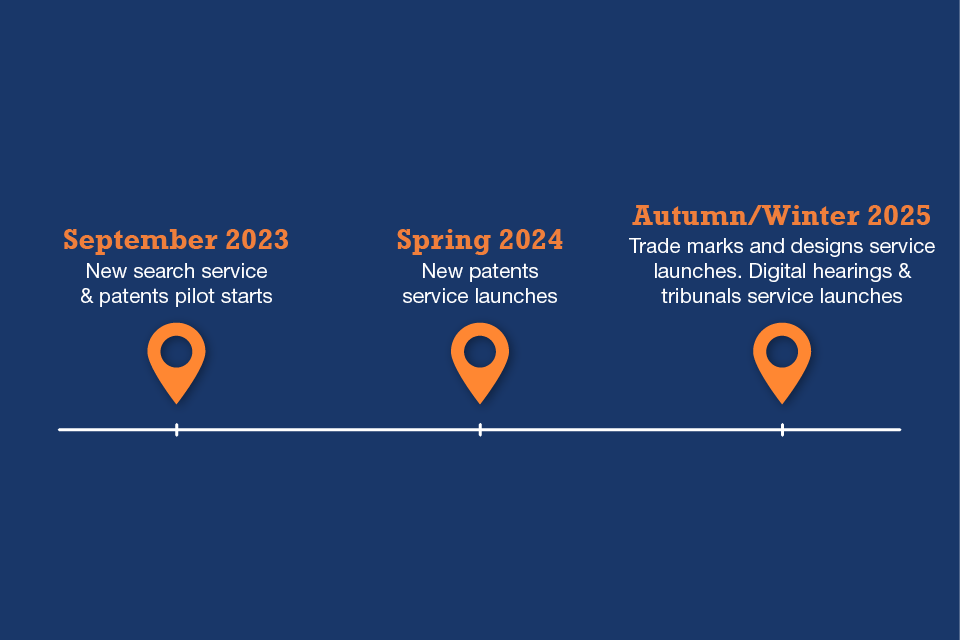Protecting your intellectual property in 2024 and beyond
Intellectual property (IP) is a critical asset for businesses – here's how to keep it safe in a world dominated by generative AI


Think about the intellectual property (IP) your company houses. What is its value, and does your business have adequate cyber security systems to safeguard these assets? As the threat landscape expands and diversifies, cyber attacks on IP are becoming more sophisticated and pervasive.
IP can exist in many forms, from inventions to bespoke code created for specific digital applications and services. Traditional protections such as patents, the registration of trademarks, and the instant protection that copyright law affords to their creators are being challenged by new threats in the digital realm. Today, businesses are also exploring new kinds of assets, such as NFTs (Non-Fungible Tokens), with a digital signature that makes them unique assets.
Similarly, as companies continue exploring how to use AR and VR, the line between physical and digital IP further blurs. The question of who owns virtual digital assets continues to be contentious. The ideas of jurisdiction and territory are not as clearly defined as they once were.
The role of hacking in intellectual property theft
Attacking a business for its data has become common, given that this data is often its most valuable asset. According to Sophos, ransomware (61%), compromised credentials (44%), and exploited vulnerabilities (22%) are the leading root causes of attacks.
"As attackers speed up their attack timelines, one of the best things organizations can do is increase friction whenever possible; in other words, if their systems are well maintained, attackers must do more to subvert them,” said John Shier, field chief technology officer at Sophos.
More on Generative AI
“Robust, layered defences create more friction, increasing the skill level the attacker needs to bring. Many simply won't have what it takes and will move on to easier targets."
Speaking to ITPro, Ali Vaziri, a partner in the data, privacy and cyber team at law firm Lewis Silkin, suggests that those companies hoping to protect their IP need to first identify where they are weakest.
Get the ITPro daily newsletter
Sign up today and you will receive a free copy of our Future Focus 2025 report - the leading guidance on AI, cybersecurity and other IT challenges as per 700+ senior executives
"When it comes to the threat of IP theft in particular, the most common vulnerability is the organization's workforce," argues Vaziri. "Employees can, unintentionally or maliciously, provide threat actors with the initial access they need to an organization's environment that can then be exploited to exfiltrate IP. That is why insider threat is one of the most important to protect against."
It's clear that protecting the IP in your enterprise needs a multi-layered approach that considers the general protections your company’s IP needs, such as patents, but also bespoke protection for any specific IP your business has created.
Generative AI may become the biggest threat to intellectual property
In an age where AI is becoming prevalent, businesses can use this technology to protect their IP and combat attacks. Already, companies can use AI-based services to watch for potential patent infringements.
"We are starting to see a tension between IP holders and the users of AI systems," Ben Travers, partner at Knights, tells ITPro. "Partly, this is because these systems "learn" by consuming data; often, they do not have the necessary permissions to consume this content."
"Issues also arise here from employees uploading the IP of their business to an AI tool and inadvertently making this content public. Regardless of their sector, businesses need to have an AI policy governing employee use of this evolving tech."
The rise of generative AI (GenAI), such as ChatGPT, has offered many enterprises tools they can use to create vast quantities of content. However, businesses now not only need to worry about threat actors gaining unauthorised access to material, but also AI-based platforms using content without permission. According to research from the Copyright Licensing Agency (CLA), many businesses and individuals in creative industries are not being compensated for their work.
"Our research revealed a general belief that generative AI will help advance the creative industries, but there are also major concerns," explains Mat Pfleger, chief executive at CLA. "Chief among these is that Generative AI is not ethical in how it works, as 67% of the people we interviewed know that generative AI is using work without permission or payment."
RELATED RESOURCE

Discover how businesses are managing their hybrid cloud adoption journey
DOWNLOAD NOW
Content generated by the raft of GenAI services needs to be carefully considered. If your business creates content using these services, who holds the copyright of the images or text you create? The EU's Artificial Intelligence Act does not mention this, leaving IP protection in a grey area of legality.
Care must be taken if this content is to be used as a component of your business's branding, as AI-generated content may infringe a third party's copyright, as much of the content returned by GenAI services is culled from the Web.
Proactive strategies for protecting intellectual property
Educating users of GenAI services to be aware of IP copyright is critical, says Kamran Maqbool, CEO of Green Cloud Hosting:
"Creating a culture of awareness and education within the organization is paramount. Employees should be educated about the importance of IP and their role in safeguarding it. Implementing strict confidentiality and non-disclosure agreements can help employees understand the sensitivity of company information."
Many businesses see IP protection as shifting sands without a firm security foundation. With the ease with which IP can be stolen or copied, technologies like the blockchain and distributed ledger provide a potential new era of IP protection. The decentralized and tamper-resistant nature of blockchain makes it an ideal solution for recording and verifying ownership of digital assets, and we may soon see a new wave of interest in blockchain-based services.
Automation for robust IP protection will also begin to become more widespread. AI-powered tools can scan vast amounts of data across digital platforms to identify potential instances of IP infringement. These tools can analyze images, text, and audio content, comprehensively monitoring intellectual property across diverse mediums.
Unfortunately, the law is still behind on some of these issues, leaving businesses largely alone in this new fight against IP theft – at least for the time being.
"In the post-Brexit era, we will likely see considerable changes for copyright laws as the UK courts gradually depart or distance itself from previous EU decisions," explains Stephanie Kay, senior associate in the IP team at law firm Lewis Silkin.
"This may be relevant for the thresholds of copyright subsistence. AI is likely to bring about big changes as more content is AI-generated, and the question of ownership of this content becomes scrutinized in copyright infringement cases."
Thaler v the UK's Intellectual Property Office
Some progress has been made, however. On the 20th December, 2023, the UK's Supreme Court issued its highly anticipated decision in the case of Thaler v Comptroller-General of Patents, Designs and Trademarks [2023] UKSC 49.
In that case, Dr Thaler submitted two applications to the patent office that contained inventions said to have been created by a system called DABUS, an AI-based machine acting autonomously. The case tested whether an AI system could be the legal patent holder of an invention, and whether the owners of those AI systems were entitled to apply for patents.
The Supreme Court ruled unanimously that an AI can't be named as an inventor under the scope of the UK Patents Act 1977 – specifically, that the term 'inventor' did not stretch to AI systems.
"This outcome was perhaps unsurprising, with the Supreme Court noting that Dr Thaler’s argument that DABUS was the inventor “has been decided against [him] at every level in these proceedings and by every judge who has considered it," law firm Lewis Silkin argues in its summary of the ruling.
"The Supreme Court was also careful to emphasise that the case was not about whether technical advances generated by AI machines should be patentable, but instead was about the correct interpretation and application of the Patents Act. The Supreme Court did however note that the rapid advances in AI technology may make such policy questions even more important."
Stephanie Kay, senior associate in the IP team at law firm Lewis Silkin, told ITPro:
"This was, ultimately, a test case... the focus now moves to the policy considerations of whether the UK should update the Patents Act 1977 to reflect the increasing use of AI."
"However, any changes must be considered in light of international harmonisation on the issue of AI inventorship and international discussions will likely increase following this decision in the UK."
IP protection in the age of AI is a landscape that is changing fast. Indeed, the Intellectual Property Office has recently launched a business growth initiative survey to investigate how IP impacts an enterprise's ability to expand and grow. 2024 will also see the launch of One IPO, which is designed to make patent search far more efficient and accurate.

The proposed timeline for the UK's One IPO scheme
Technologies like GenAI are a double-edged sword when it comes to IP and how this is created and protected. Businesses should take care not to infringe copyright, for example, when using GenAI platforms to create new IP. And by the same token, specific GenAI services are coming online that focus on IP protection. A balance must be stuck.
As the IP threat landscape continues to expand, developing a high level of vigilance is essential. Paying close attention to IP law and how this is also changing in the face of new challenges across digital spaces is vital for all enterprises.
David Howell is a freelance writer, journalist, broadcaster and content creator helping enterprises communicate.
Focussing on business and technology, he has a particular interest in how enterprises are using technology to connect with their customers using AI, VR and mobile innovation.
His work over the past 30 years has appeared in the national press and a diverse range of business and technology publications. You can follow David on LinkedIn.
-
 Bigger salaries, more burnout: Is the CISO role in crisis?
Bigger salaries, more burnout: Is the CISO role in crisis?In-depth CISOs are more stressed than ever before – but why is this and what can be done?
By Kate O'Flaherty Published
-
 Cheap cyber crime kits can be bought on the dark web for less than $25
Cheap cyber crime kits can be bought on the dark web for less than $25News Research from NordVPN shows phishing kits are now widely available on the dark web and via messaging apps like Telegram, and are often selling for less than $25.
By Emma Woollacott Published

